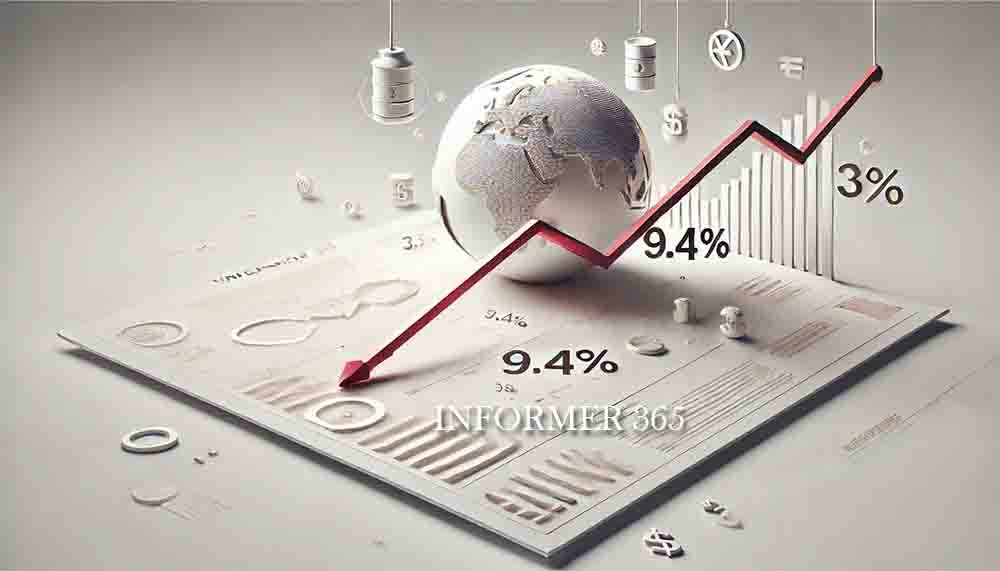- Inflation drops from 9.4% in 2022 to 3.5% by end of 2024.
- Interest rate hikes by the Fed and ECB helped reduce inflation.
- Lower oil and gas costs reduce inflationary pressures.
- Inflation declines sharply in developed economies.
In 2024, global inflation is on the decline, following a period of rapid increases during the pandemic. According to forecasts from the International Monetary Fund (IMF) and World Bank, inflation, which peaked in 2022, is expected to drop significantly by the end of the year. This marks a key point in the global economic recovery from COVID-19, geopolitical tensions, and the energy crisis.
Factors Driving the Decline in Inflation
Several factors have contributed to the decline in global inflation. Key among these are strategic policy measures, market recovery, and the resolution of disruptions caused by the pandemic. Central banks, particularly the U.S. Federal Reserve and the European Central Bank (ECB), have been vital in controlling inflation through interest rate hikes. These rate increases have cooled consumer demand and slowed business investment, helping to reduce the inflationary pressures that surged during the pandemic. As a result, demand-driven inflation has eased, leading to a global slowdown in price growth.
Additionally, the gradual recovery of global supply chains has been essential. The disruptions caused by lockdowns, labor shortages, and logistical issues have slowly improved. This recovery has allowed the flow of goods to return to normal, further reducing inflation. The IMF estimates that global inflation, which reached 9.4% in 2022, will drop to 3.5% by the end of 2024, marking a return to levels closer to pre-pandemic figures.
Improvements in energy markets have also played a crucial role in inflation reduction. Following a sharp rise in energy prices due to geopolitical tensions, especially the war in Ukraine, global energy prices began to stabilize in 2023. Lower oil and gas prices have helped reduce energy-related inflation, a key component of the Consumer Price Index (CPI). With these combined factors, inflation is expected to continue its decline, contributing to a more stable economic environment heading into 2024.
Since 2022, central banks worldwide have implemented tightening monetary policies to control inflation. The U.S. Federal Reserve, for instance, has raised interest rates, which helped reduce inflation from over 9% in 2022 to around 3% by late 2024. Experts predict that central banks will soon shift toward more accommodative policies, lowering rates as inflation stabilizes near the target level of 2%, common among many developed economies.
Supply Chain Recovery and Energy Stabilization
The recovery of global supply chains, which were severely disrupted during the pandemic, has been a major factor in reducing inflationary pressures. Problems with transport, labor shortages, and logistical bottlenecks have eased, leading to smoother production and distribution. These improvements have lowered production costs and shipping fees, helping to reduce cost-push inflation, which is driven by higher costs for raw materials and transportation. As a result, the prices of goods and raw materials have stabilized, contributing to the overall decline in inflation.
Simultaneously, energy prices, which soared during the geopolitical tensions of the Ukraine conflict, have begun to stabilize. Oil and gas prices, which spiked in 2022, have decreased, helping to reduce energy-related inflation. This has been crucial for sectors that depend heavily on energy, such as transportation, manufacturing, and food production. Lower energy costs have eased operational expenses, allowing businesses to pass on savings to consumers.
Regional Variations in Inflation Trends
Inflation trends vary significantly by region, reflecting different economic conditions. In emerging markets like Brazil and India, inflation remains high but is on a downward trend. Central banks in these countries have raised interest rates to curb inflation, but supply-side issues, such as high food prices and logistical disruptions, continue to put upward pressure on prices. The IMF expects inflation in emerging markets to decrease by about 1% in 2024, although challenges remain, especially in sectors that rely on imports and raw materials.
In contrast, inflation in developed economies is showing a more substantial decline. For example, in the United States and the European Union, inflation is expected to fall from 4.6% in 2023 to 2.6% in 2024. This improvement is largely due to successful monetary tightening measures by central banks like the U.S. Federal Reserve and the ECB. These policies, including interest rate hikes, have reduced demand pressures, contributing to the overall easing of inflation. Additionally, the stabilization of supply chains and energy prices has reinforced this trend.
However, some European countries, especially those reliant on energy imports, may face slower inflation reduction. Rising energy costs, though lower than during the 2022 energy crisis, still pose risks. As a result, energy-sensitive sectors may continue to experience inflationary pressures. Despite this, the overall global trend of declining inflation offers a positive outlook for 2024 and beyond.
Economic Implications and Outlook
The global reduction in inflation will have far-reaching economic effects. Lower inflation creates a more stable environment, encouraging investment and business growth. As inflation stabilizes, central banks will have room to adjust interest rates to stimulate further economic activity. Consumers will benefit from increased purchasing power, leading to higher spending, which will support post-pandemic recovery.
The global decline in inflation in 2024 marks a crucial turning point. With inflationary pressures easing, the global economy is on track for a more balanced and sustained recovery. While challenges remain in some emerging markets, the overall trend toward lower inflation offers optimism for both businesses and consumers. As inflation stabilizes, the world economy is closer to entering a new era of growth and stability.


